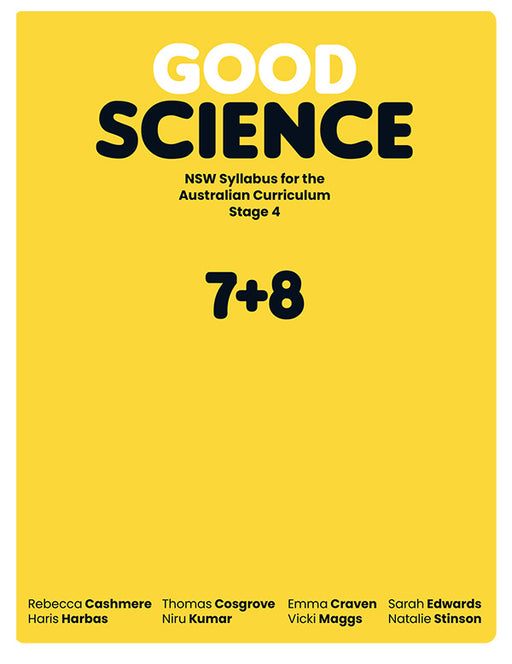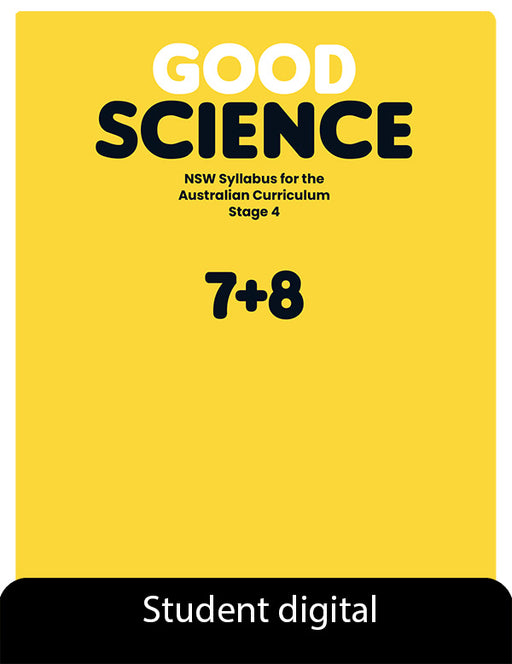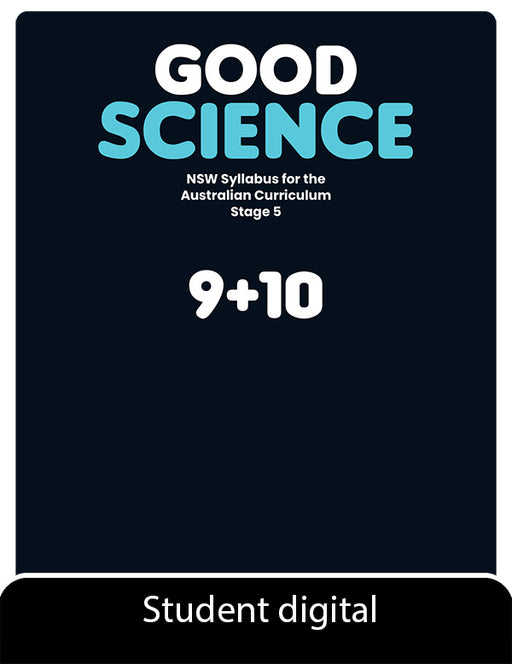
Make every science lesson a GOOD lesson with Good Science.
Engineered to be wholly different from any other series available in NSW, Good Science is designed from the ground up to be simpler, better and more effective for teachers and students. In addition to covering the NSW syllabus content areas the series focus on developing students' scientific literacy, numeracy and critical thinking skills.
Features:
- Every chapter begins with a critical thinking 'hub', designed to elicit prior knowledge and resolve any misconceptions before you progress further into the topic
- Discrete double-page spreads: one spread, one lesson, one NSW science syllabus content area covered. Every spread is constructed around the same elements to support navigation and expedite learning
- Literacy and numeracy activities built into every lesson, including on-page glossary for vocabulary support
- In-text questions to help students to 'come up for air' at the end of every concept
- Every chapter concludes with a visual summary and end of chapter Final Challenge questions
- Investigations are positioned at the end of the book, allowing a spacious and clear layout with the full scientific method scaffolded for students.
The Teacher e-book contains:
- A comprehensive teaching program
- Answers to every question in the text
- End of chapter tests with marking scheme
- Printable student worksheet for every lesson with answers
- Audio HITS: teacher implementation audio file for every lesson
- Indigenous Science implementation support: Audio HITS, teacher support, student activity sheets and fieldwork suggestions.
- STEM connections
27-month digital access on the MyDigital platform.
To view a sample of Good Science NSW click here.
Table of Contents
CHEMICAL WORLD
1. States of matter
2. The structure and properties of matter
3. Mixtures
4. Chemical change
EARTH AND SPACE
5. Earth and the rock cycle
6. Earth, Sun and Moon
7. Resources
8. Water as a resource
PHYSICAL WORLD
9. Forces
10. Fields
11. Energy
12. Energy as a resource
LIVING WORLD
13. Classification
14. Cells
15. Body systems
16. Biotechnology
17. Ecosystems
SKILLS AND INVESTIGATIONS
18. Skills and Investigations
IMPORTANT: Please note- a new edition of Good Science NSW teacher access has been crafted to reflect the new 7–10 Science syllabus for New South Wales. Find out more information here.





